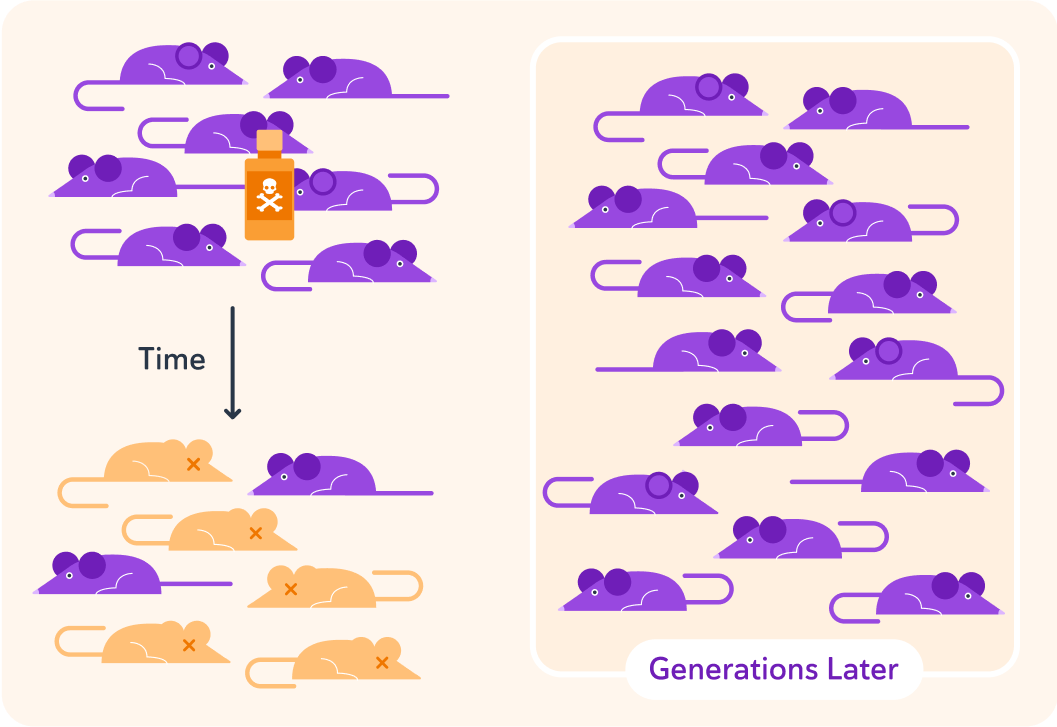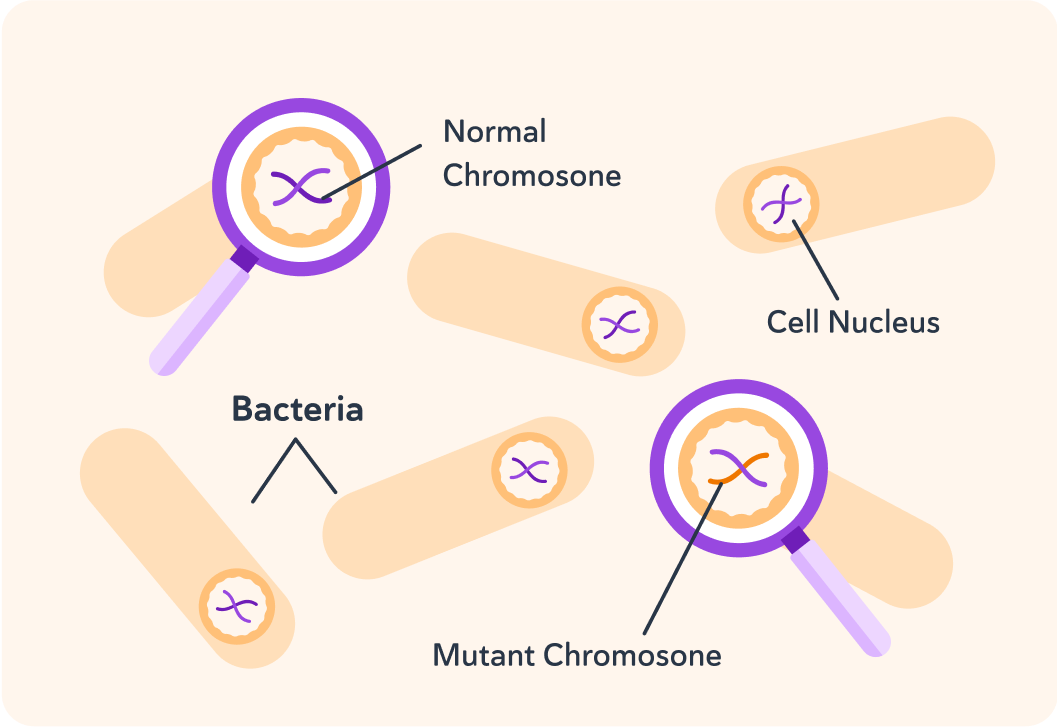YOU ARE LEARNING:
Evidence for Evolution: Bacterial Resistance

Evidence for Evolution: Bacterial Resistance
The emergence of antibiotic resistance seen in bacteria show support for the theory of evolution by Darwin.
Which of these best describes evolution?

Why is it often difficult to find evidence for evolution by direct observation?

A Rats' Tale
To control rats, a poison called warfarin was used many years ago.

Nearly all rats were killed by this poison, however a few were unaffected by it.
These rats survived to breed and pass on this advantage.

Slowly over time the poison had less and less effect.
Today warfarin is no longer used, as it has no effect on today's rat population.

What term might be used to describe this idea that some individuals survive in an environment better than others?
A) Survival of the strongest B) Survival of the fittest C) Evolution D) Speciation


Evidence is vital to prove a theory is true. Evolution works over many generations and over long time periods, so observing change in a species is normally very difficult. However, some organisms reproduce very rapidly, producing thousands of generations in just a few days or week!
Which if these do you think reproduce the fastest?

So bacteria reproduce incredibly rapidly. In fact, they can double in number, (a whole new generation) in just 20 minutes!
The bacteria above have only two chromosomes (collection of genes).
Most of them have the same genes, but one contains a chromosome with a mutant gene.

This mutant gene (changed gene) makes it resistant to penicillin.
Penicillin is used as an antibiotic (a medicine) to kill bacteria.

If penicillin is added to the bacteria above, what will happen ?
A) They will all die. B) Nothing. C) One of them might live.


If the bacteria that do survive the penicillin are allowed to reproduce for a few generations, what will eventually happen if these new generations of bacteria come into contact with penicillin?

If more bacteria are resistant to penicillin, then what has happened to the number of bacteria that contain the mutant (resistant) gene throughout the generations?

The resistance of bacteria to antibiotics can be used to track how frequently resistant genes occur in a population of bacteria. They show that the genes can quickly spread to most individuals within a few hundred generations. Do these observations seem to support or contradict Charles Darwin's theory of evolution?

The resistance of bacteria to antibiotics provides evidence for Charles Darwin's theory of evolution. It shows that Darwin's ideas work in practice - not just in theory.
If all the bacteria that cause an illness can evolve to resist the medications we use, what will happen to our ability to control the illness?

